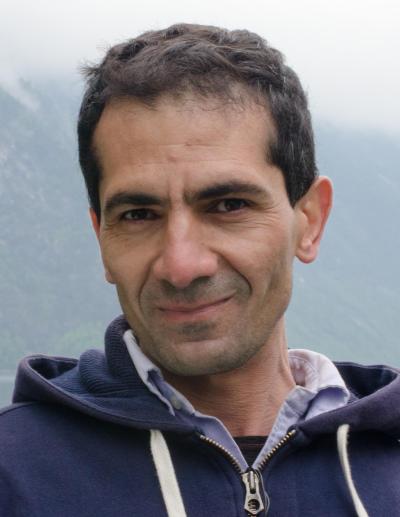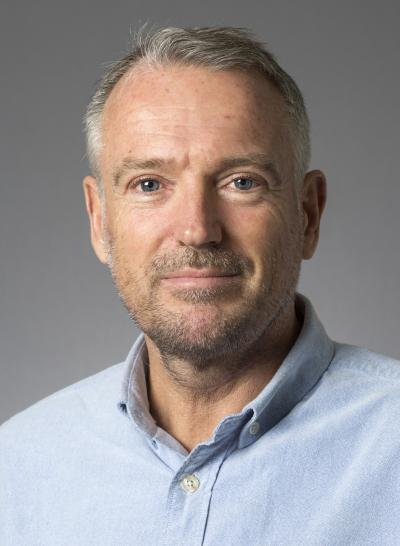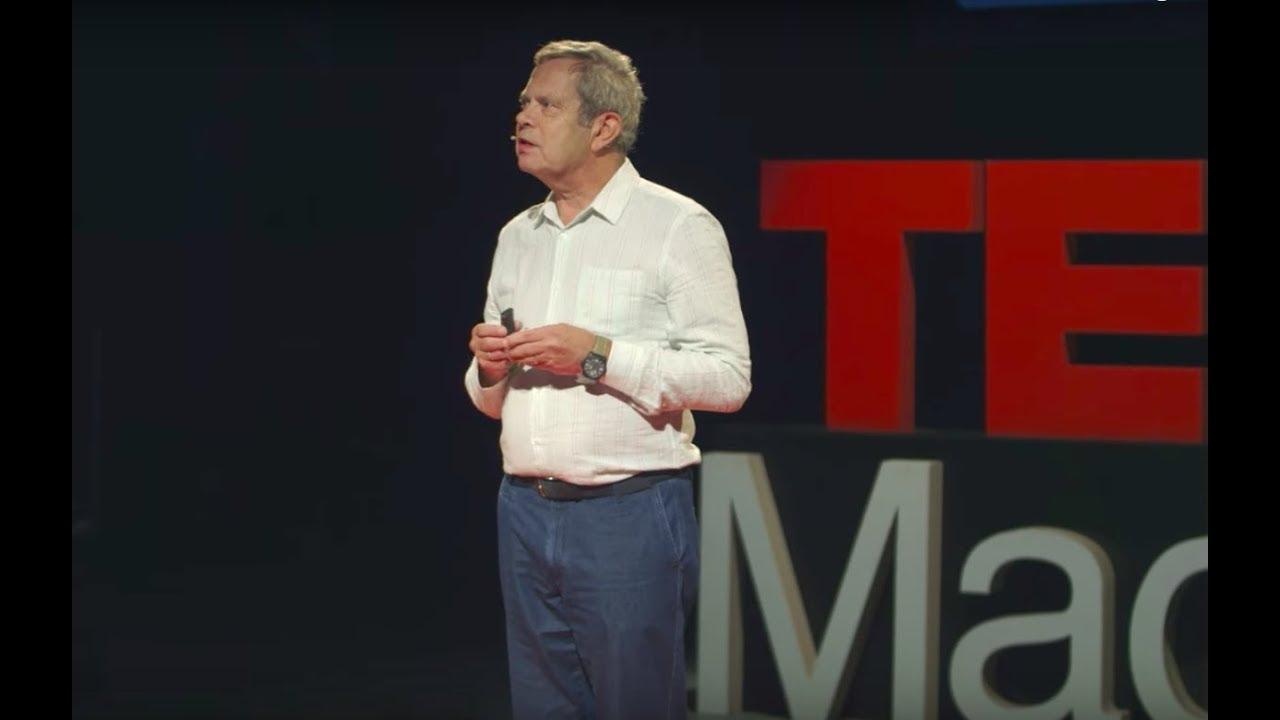Forget remembering
We often think of forgetting as a problem and an infallible memory as the ideal. But new research shows that forgetting is a normal and necessary mechanism.
Nepal, 18 January 2022: Nabal Pajiyar walks up and down a row of tables on which various objects have been placed, including a poinsettia, a spray can, a globe and a loaf of bread. A bell rings. Nabal turns away from the tables. He’s about to try to memorise his way into the Guinness World Records for ‘remembering the most random objects in one minute’.
His chances are good. Nabal Pajiyar is already famous as the ‘Memory King’. We are all obsessed with memory. And it is not a new phenomenon –the Greeks had a god of memory, Mnemosyne.
Forgetting is memory’s evil twin. It hasn’t lent its name to a god, only to the river Lethe in the realm of the dead. Because we hate forgetting. Who hasn’t searched frantically for their keys, cursing under their breath? Or wondered why they mislaid both their shopping list and glasses at the same time? And who hasn’t wondered if this isn’t the first tell-tale sign of dementia?
We tend to think of forgetting as a fault or even a sign of illness. For years, neuroscientists have looked at it as a psychological or neurological deficiency. However, for the last 10–15 years, several researchers have been exploring the nooks and crannies of forgetting. They now believe it may have a specific function and its own molecular-biological mechanisms.
Using experimental psychology and neuroscience, new technologies, human and animal studies, mice, rats, zebrafish and worms, they are studying why and how we forget – and whether what we have forgotten is lost forever.
Forgetting saves us from overload
In 2022, Paul Frankland and Blake Richards, researchers at the University of Toronto in Canada, presented one of the latest theories relating to forgetting. They believe that the purpose of memory is not to remember everything but to achieve a balance between remembering and forgetting, which better enables us to make intelligent and informed decisions.
Dr Scott Small, American neuroscientist and head of the Alzheimer’s research centre at Columbia University, also believes that forgetting – within the normal range – is good, even healthy, for us. The message of his 2021 book Forgetting: The Benefits of Not Remembering is clear – forgetting is good for our cognitive and creative abilities, emotional life and general health.
When we forget negative experiences, we are able to face the world with a more open mind. Forgetting affords us space to think in new ways so that we do not get stuck in old thought patterns.
‘Forgetting is nature’s gift to us,’ says Small.
So why do we forget? This seems like the obvious question to ask one of Europe’s leading memory researchers, Professor Richard Morris of the University of Edinburgh.
‘Forgetting saves us from brain overload,’ he says, speaking from his Paris hotel room via Zoom. Morris is a renowned specialist in the field of memory research and is in high demand throughout Europe.
‘When we feel mentally exhausted after a long day of reading or talking, it’s because we are crammed full of impressions. And we need to free up space by getting rid of some of them. We need to forget,’ explains Morris.
The professor once left his coat on the tube in London. After contacting the train staff, who found it for him, he caught another train and went to pick it up. Unfortunately, as this new train pulled away from the platform, he realised he had forgotten his bag at the station he had just left. What a mess!
’Forgetting is a part of memory’
Morris likes to recount this story when delivering lectures about his research. His point is that we can all be distracted, and we all forget things all of the time. It’s perfectly normal.
He explains that all our daily experiences are automatically coded into the seahorse-shaped structure at the centre of the brain called the hippocampus. This is our memory centre. It’s where we gather and make connections between all of our information and sensory impressions. But the hippocampus can end up stuffed full.
To offset this, most of the information is relegated to perpetual oblivion within a few hours, while a small amount is transported to the neocortex, where it is consolidated overnight during dreamless sleep. Morris thinks this is positive because most of the day’s inputs are things we can do without
Memory woman just wants to forget
Jill Price (57) from New Jersey, USA, agrees that we need to forget. Unlike most people, she wishes she was better at forgetting but is known as ‘the woman who can’t forget’.
She can tell you what she wore, what she ate and what the weather was like every single day since she was 14. Price has what is known as superior autobiographical memory. However, she does not remember poems or mathematical formulae unless they have played a special role in her own life.
Price describes her condition as stressful because she constantly sees her life running like a film loop in her mind’s eye. This is particularly distressing when she finds herself vividly reliving negative experiences.
Price has a syndrome called hyperthymesia or highly superior autobiographical memory (HSAM). In 2006, she was the first person ever to be diagnosed with the condition. She is now one of about 60, but the root causes have still not been explained.
On the opposite end of the scale are people with ‘accelerated long-term forgetting’ (ALF), who forget exceptionally quickly. This condition is sometimes seen in people with epilepsy or who have suffered a stroke.
Studies into both phenomena may shed light on how the brain processes information and impressions and determines whether they should be stored or binned.
The strength of the neural connections is crucial
Morris is at the forefront of memory research. His priority is to identify the physiological mechanisms involved in remembering and forgetting. In 2016, along with two other neuroscientists, he was awarded the Lundbeck Foundation’s Brain Prize, an annual neurological research prize, for his contribution to the understanding of memory.
The professor’s achievements also include helping to show how repeated stimulation strengthens the connections between the brain’s nerve cells – the neurons. Memories are formed like this:
You see a seagull in the sky. The probability of you forgetting it is high. But if something surprising happens at the same time – a lightning strike, for instance – the neural connections will stabilise, meaning you are more likely to remember the seagull. And should your partner unexpectedly kiss you at the same moment, the feeling of the kiss becomes linked to both the word ‘seagull’ and the visual impression of the bird. This adds an emotional component to the memory, such that you may find yourself thinking of your partner every time you see a seagull.
All kinds of stimuli can strengthen this connection – in fact, the more, the merrier – because they affect which proteins are produced in specific places in the synapses – the tiny space between nerve endings. This is where the magic happens, i.e. where the cells communicate with each other. The process is called long-term potentiation (LTP). LTP is induced by specific patterns of brain activity that are crucial for encoding memory traces. It occurs automatically, without the need for conscious thought.
Morris and his group at the University of Edinburgh showed how the process worked in experiments with rats. The researchers taught the rodents to find their way to a treat in a new spot every day. The rats quickly remembered what they had learnt. But the researchers then surprised the rodents by putting them in a box with a new layer at the bottom: rice one day, tea leaves the next. The animals otherwise felt safe in their familiar surroundings. The added surprise element helped the rats remember where the treat was hidden for much longer. The surprising new sensory information was found to affect the animals’ memory.
‘When the connections are strengthened, they are, in effect, marked or coded in a way that stabilises the change. This is a physiological and biochemical process that we’re only now beginning to understand,’ explains Morris. Without this coding, we will naturally forget the experience, and this prevents information overload.
The strength of the neural connections is, therefore, crucial for determining whether we remember or forget. Different factors can affect the connections.
‘We have a kind of time window of roughly two to three hours, perhaps a little more, in which a long-term memory can be formed if something happens that reinforces the neural connections,’ says Morris.
He cites as an example the 9/11 terrorist attack on the Twin Towers in New York. The fear triggered in those who witnessed it strengthened the neural connections, reinforcing their memory of the tragedy – but the surprising nature of the event also played an important role.
‘When you’re surprised, you activate a specific area of the brain, which sends a kind of “print now” signal. So we remember not only the sight of the towers but also where we were and who we were with,’
The evolutionary explanation is that, in order to survive, it is crucial that we strike the right balance between remembering and forgetting.
Morris and his team demonstrated the effect of surprise in an optogenetic experiment with mice. The researchers used a blue light to trigger a ‘print-now’ signal that activated the area of the brain that processes surprise.
However, synapses can be both strengthened and weakened. The opposite of LTP is when the synapses are weakened. This is called Long Term Depression (LTD).
The molecular mechanism of forgetting is simply the reverse of remembering. Forgetting, therefore, is not a memory defect – but an integral part of the process.
It’s also possible to switch a memory on and off by strengthening or weakening the synapses.

In 2014, the neuroscientist Sadegh Nabavi, who heads his research group at the interdisciplinary DANDRITE research centre at Aarhus University and is affiliated with the basic research centre PROMEMO, became the first to demonstrate this on-off mechanism in an experiment conducted at the University of California, San Diego.
Molecular biology research on memory is gaining momentum in Aarhus.
Learning to forget
So let’s zoom in on Aarhus. Remarkable basic research is being conducted there, building on some of the discoveries made by Morris, which are crucial for driving the field onward and paving the way for a deeper understanding of the mysteries of the memory.
This is taking place at the PROMEMO (Center for Proteins in Memory), under the Department of Biomedicine at Aarhus University, and an offshoot of the neuroscience centre DANDRITE.
Led by Professor Anders Nykjær and based in the Skou Building in University Park, PROMEMO’s international research team is investigating the proteins involved in long-term memory, particularly emotional memory, which is stored deep in the brain. The idea is that when a memory is being created, new proteins form in the synapses between neurons. These proteins are crucial for memory retention.
A large number of proteins have already been identified, but there are likely to be hundreds more. Some keep the cells in the brain functioning properly, while others are more directly involved in the mechanisms of remembering and forgetting.
The researchers in Aarhus have chosen to focus on the family of proteins called sortilins – and two in particular. When we learn and store information, the numbers of these proteins increase by a factor of 200. If the gene that codes these proteins is switched off, the mice experience learning and memory difficulties. This suggests that these two proteins may play an important part in both remembering and forgetting. Researchers are studying the structure of proteins, how they interact and their function in the animal brain, as well as the genes that contain the recipe for the proteins.
Originally, Nykjær’s work focused on the proteins particularly relevant to mental disorders. However, when it transpired that the same proteins showed up in studies on memory, it piqued his interest, and he decided to investigate the link between mental disorders and memory.
‘All psychiatric conditions usually have an element of memory disorder,’ says Nykjær, citing as examples autism, PTSD, anxiety, depression and schizophrenia.
In the longer term, a better understanding of the molecular biology involved could pave the way not only for drugs that enhance memory function but perhaps ways of regulating forgetting, i.e. drugs that trigger a kind of ‘therapeutic forgetting’. For example, Propranolol has been shown to help people with PTSD by lessening the intensity of emotional memories associated with traumatic events. This is because it inhibits the function of specific nerve cells, including those central to memories associated with anxiety. However, it also has severe side effects. As such, there is some controversy about whether manipulating memory, rather than psychotherapeutic processing, is the right way to go.

For eksempel har det vist sig, at medikamentet Propranolol kan hjælpe mennesker med PTSD til at lette den følelsesmæssige hukommelse, der er forbundet med den traumatiske hændelse, de lider under. Medikamentet hæmmer funktionen af specifikke nerveceller, der bl.a. er centrale for hukommelse, forbundet med angst.
It may be possible to learn to forget by deliberately weakening the synapses, which may be relevant to PTSD treatment.
‘In experiments, we have seen that you can teach a mouse to associate a certain sound with a tiny shock. You then remove the shock and replay the sound to the mouse over and over again. We can see that it no longer links the two impressions. It’s forgotten the shock – or rather, it has learned to forget it,’ says Nykjær.
It may be that the existing memory is updated with new information. In other words, it does not disappear, it just changes. It is a well-known phenomenon that our memories change each time we recall them. For example, two people will often remember a factual experience slightly differently.
Even zebrafish and worms forget
But what about the things we really have forgotten? Are they lost for good? This is one of life’s great puzzles, with several possible answers.
A team of Irish and Canadian researchers has presented a new theory addressing this question. They believe that when we can’t remember something, it’s because we can’t activate the groups of neurons where the memories are stored. The memories are still there, but they are locked behind a door. We just lack the key to open it. They also believe that there are several ways in which we forget, all of which involve blocking access to our memories.
A new experiment conducted on worms by researchers at Harvard University shows that information is sometimes lost – but not necessarily every time. In the laboratory, the 1-mm-long transparent roundworms Caenorhabditis elegans learned to recognise the smell of a bacteria that can make them sick. This learning process took four hours. Just one hour later, the worms had forgotten the link between odour and bacteria.
The researchers then analysed the brain activity and genes in the worms’ neurons. Compared to worms that had not undergone the same training, the worms that had forgotten displayed quite unusual brain activity. This activity was different than it had been both before the training and during the period when they still remembered the connection.
The researchers tested whether the worms had forgotten everything – and they hadn’t. In just three minutes, they could be retrained to recognise the smell again and avoid the bacteria.
This experiment suggests that what we forget doesn’t always vanish completely. However, another new experiment shows something else – that the processes of forgetting and experiencing something new happen at the same time.
Confused? There’s no reason to be! Both can be true, according to the researchers who believe there are multiple pathways to forgetting. However, this research involved very different experiments and animals, which may partly explain the new findings.
This second discovery was made by researchers from the University of Southern California, working with zebrafish. The fish were genetically engineered with fluorescent synapses. The researchers took images with a laser microscope before, during and after the formation of a memory, providing a rare snapshot of the fish’s brain activity. The fish were exposed to an infrared laser that heated their heads in the experiment. Understandably, they didn’t like this, so they swished their tails and tried to escape.
The fish were then exposed to a flash of light at the same time as the heat ray. After a while, they learned to associate the flash of light with heat. Next, the fish were only exposed to the flash of light. Even though there was no heat, they again swished their tails to get away. This showed that they had formed some kind of memory. The recorded images show that at the moment the information is stored, a whole cluster of yellow dots light up – these are new neural connections
But in another area, a large number of blue spots could also be seen. These are existing connections that are disappearing as new ones are formed.
It may well be the case that both types of forgetting exist because we need them – one in which we retain the opportunity to retrieve what we have learned; and one in which the old learning is scrapped.
Back in Nepal, Nabal Pajiyar memorised 59 objects in a minute – more than anyone else. It’s a new world record. The question is, how long will it take for the river of forgetting to wash away all 59 items from the mind of the Memory King?
